- Joined
- May 24, 2005
- Messages
- 5,472
- Reaction score
- 5,267
Hello All.
Here is another item I picked up while at the Antique Arms Show in Baltimore last month.
Seller said it had been re-converted back to flintlock. And I don't dought that. The vent hole shows no corrosion or wear like the rest of the gun.
While this is not in my area of expertise, I come to you guys with a couple questions/comments: The lock is dated 1827. The frizzen looks like the 1816 style, but with the old remenants of being half-soled. But if I'm correct, it looks like the re-conversion was done utilizing a 1795 style hammer. Is that correct ? Also, the caliber at the muzzle is about .74 I thought they were all standard U.S. .69 I did not mike it, but the simple bore guage comes out to that.
Anyway, I thought this might be a good candidate to make into a shooter. The lock's in good working order. Just needs a new frizzen. And the ramrod is missing. But that can also be replaced. The bore looks a bit rough. Hope it will burnish out ok. If not, it can have Hoyt install a liner. The stock is very solid. No cracks. The only thing thats a real mystery is the bore caliber. Any ideas ? Thanks.
Rick
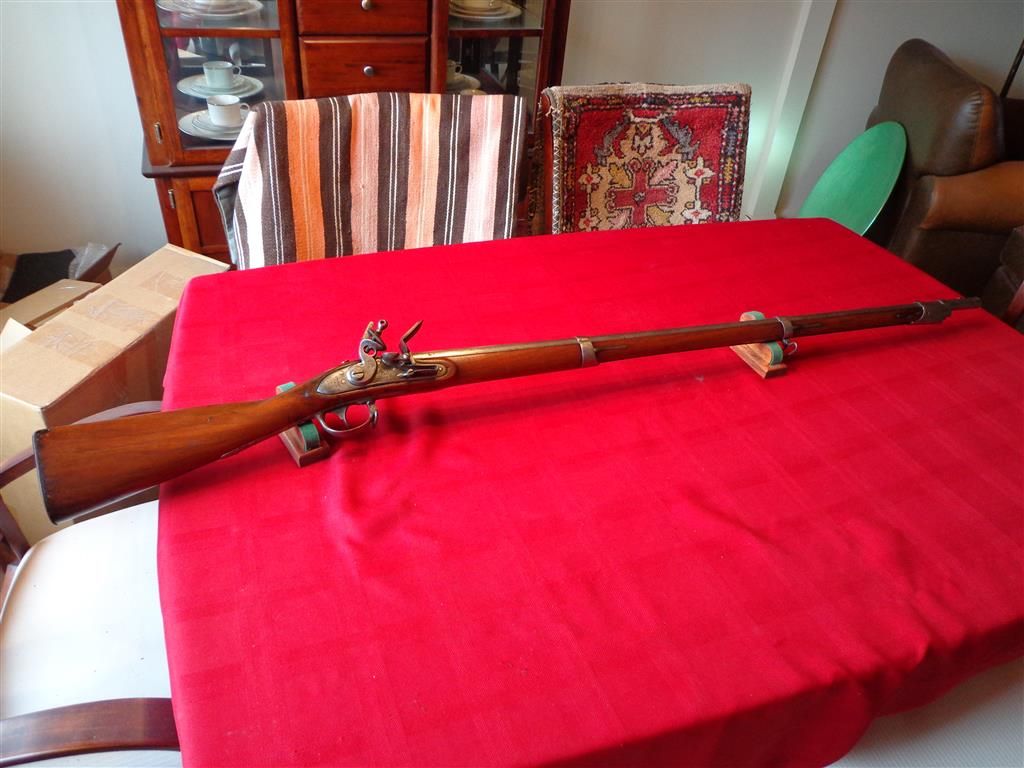
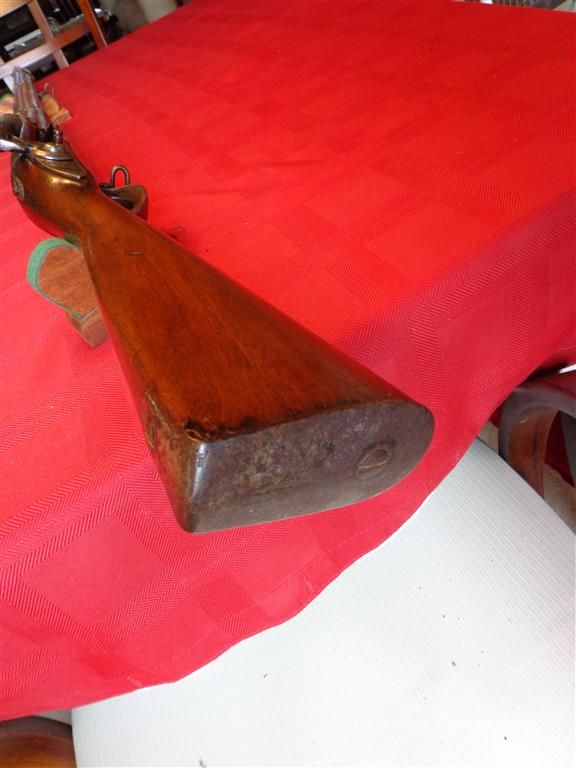
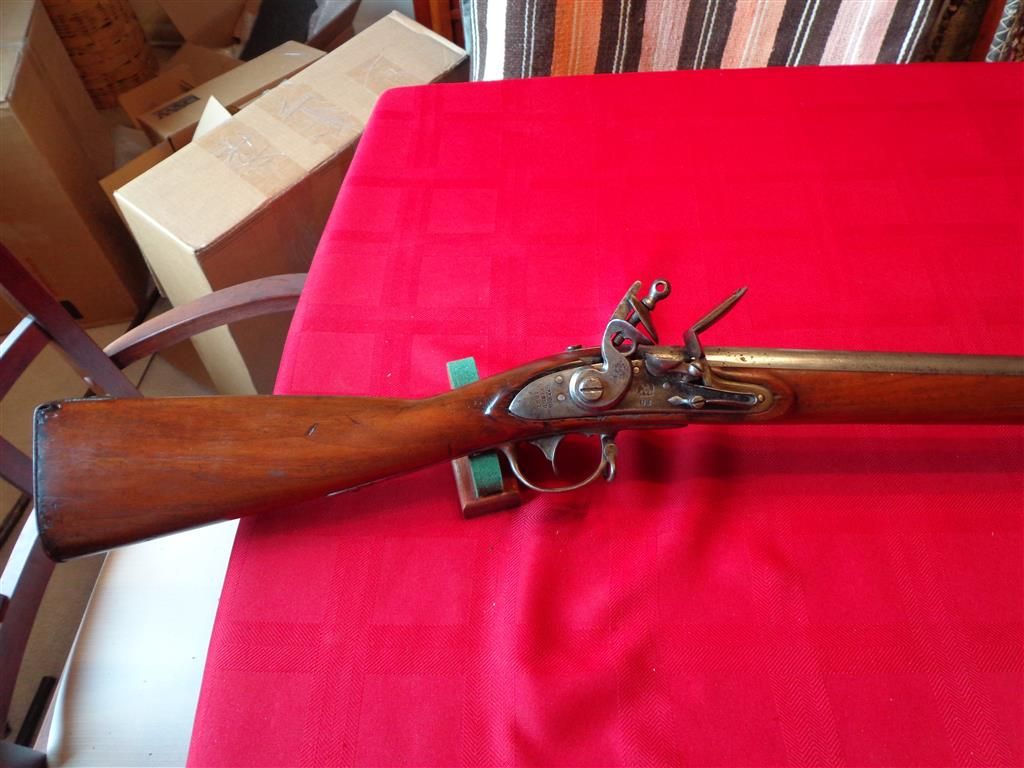

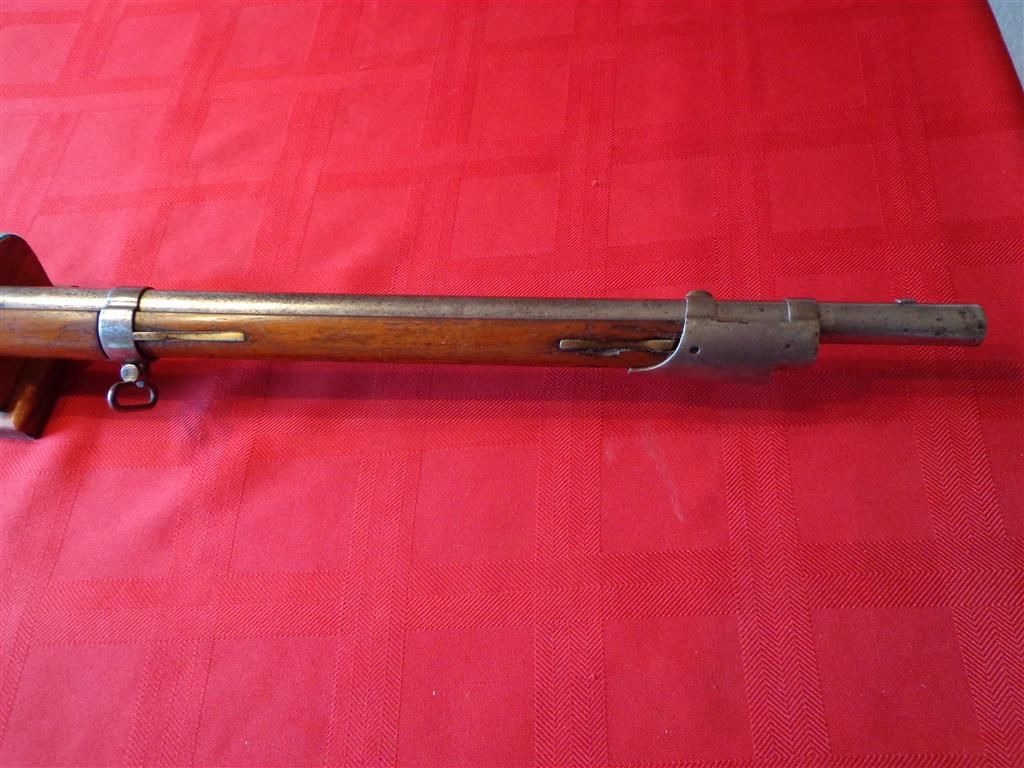
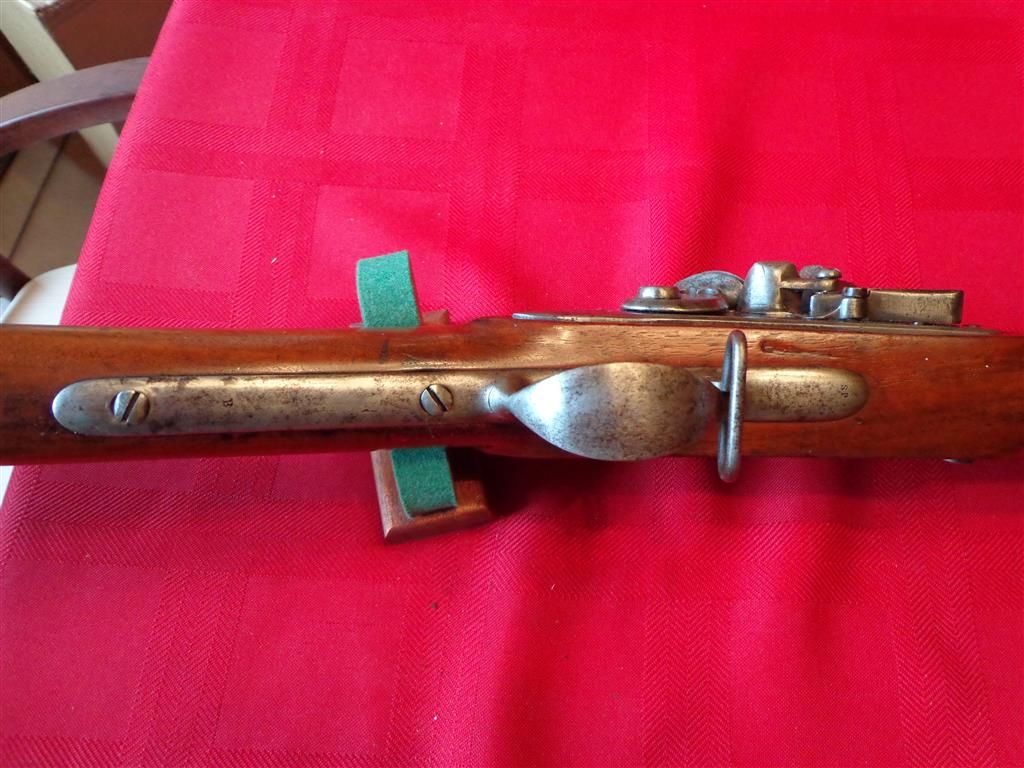
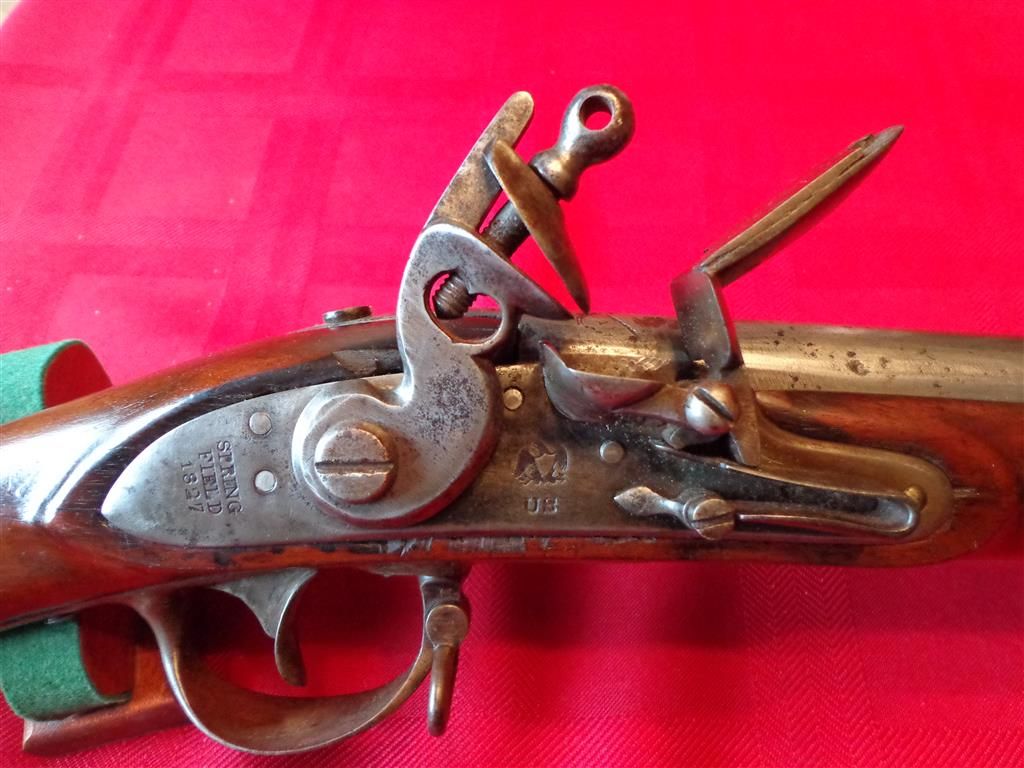
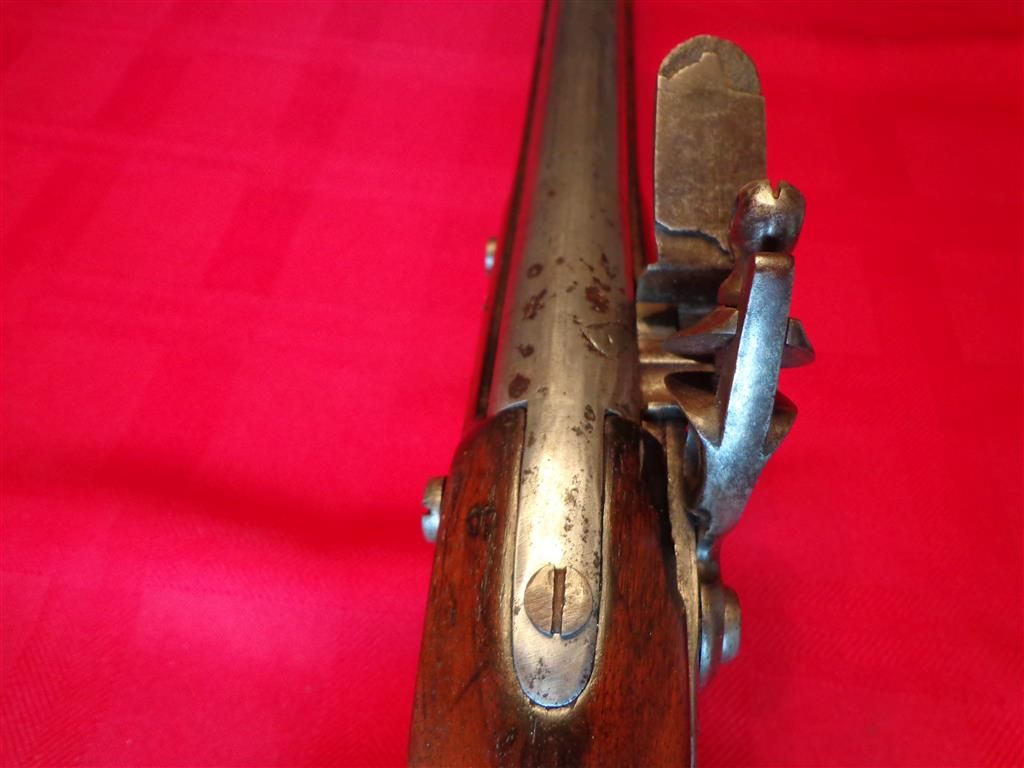
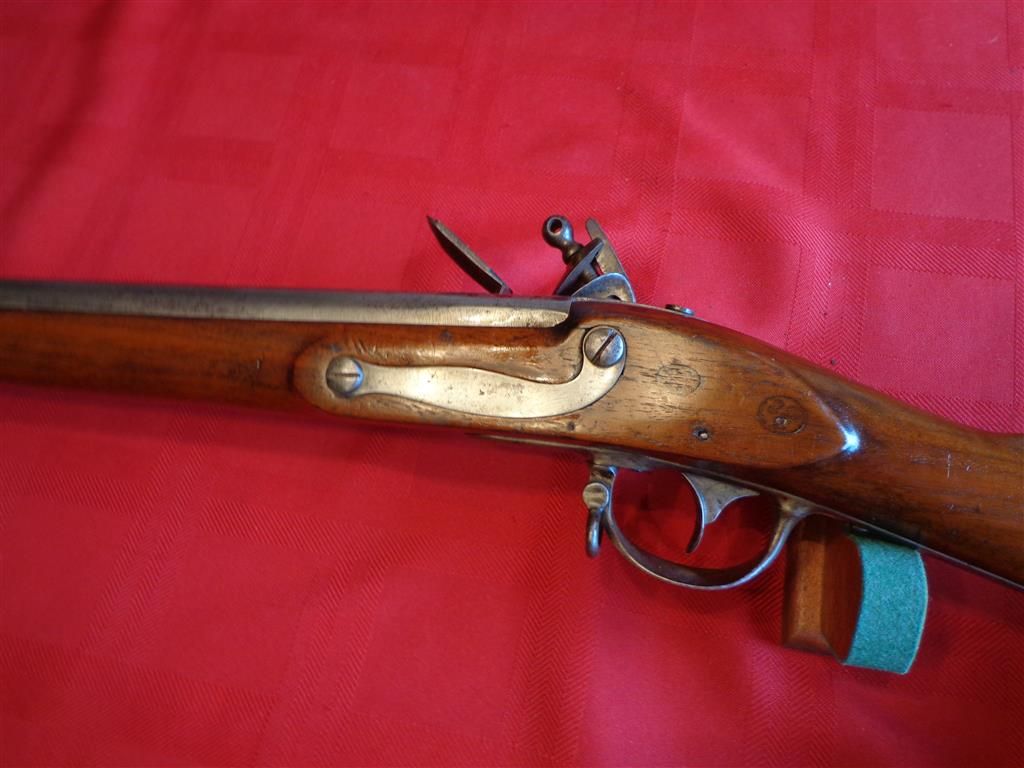

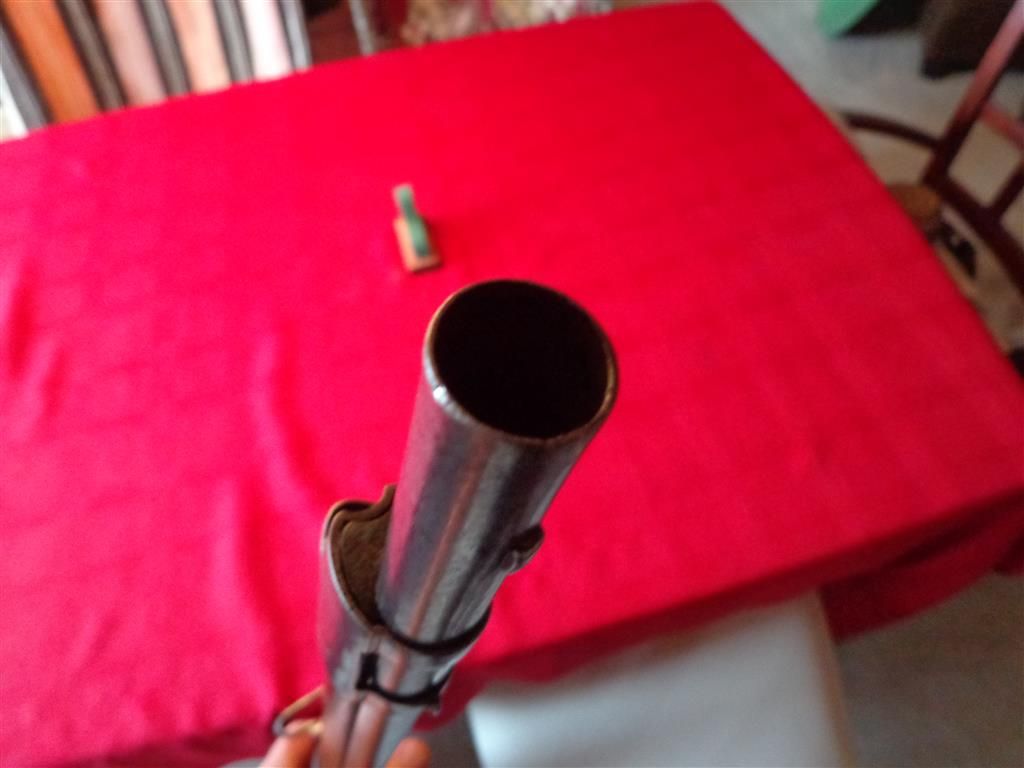
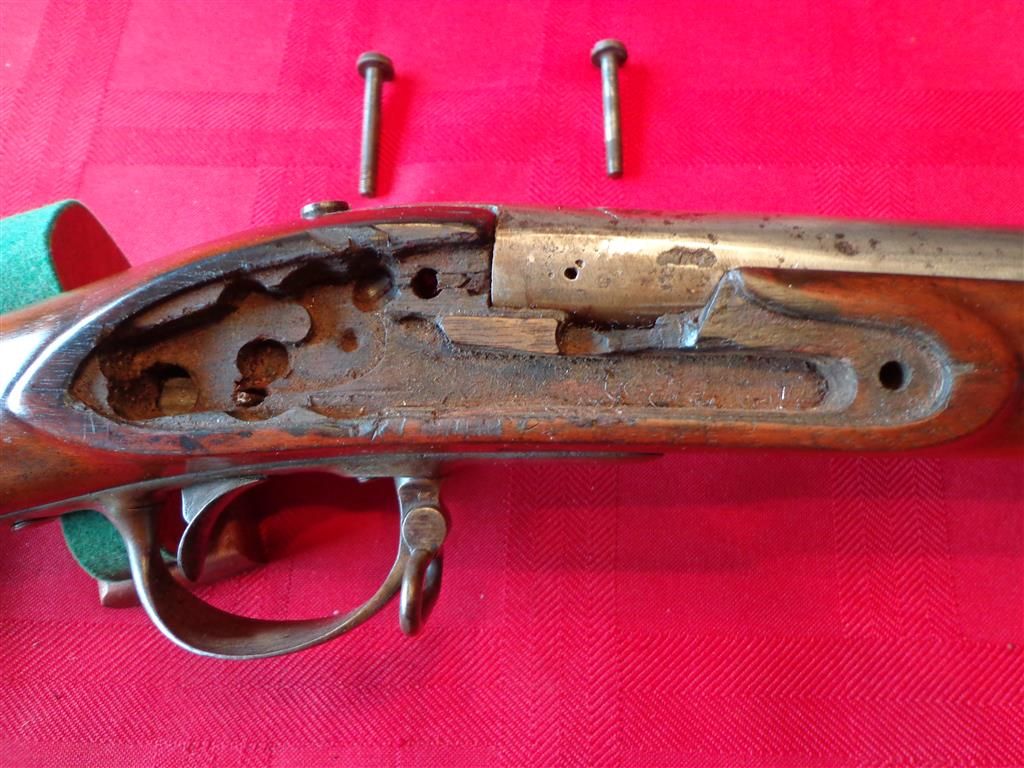
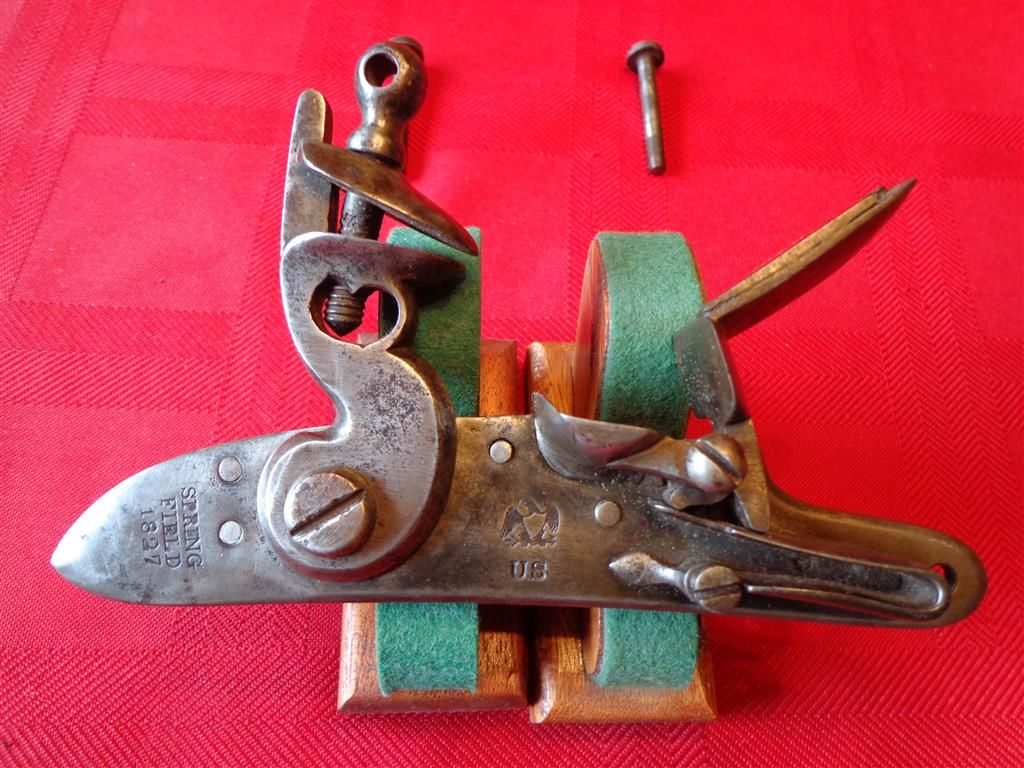
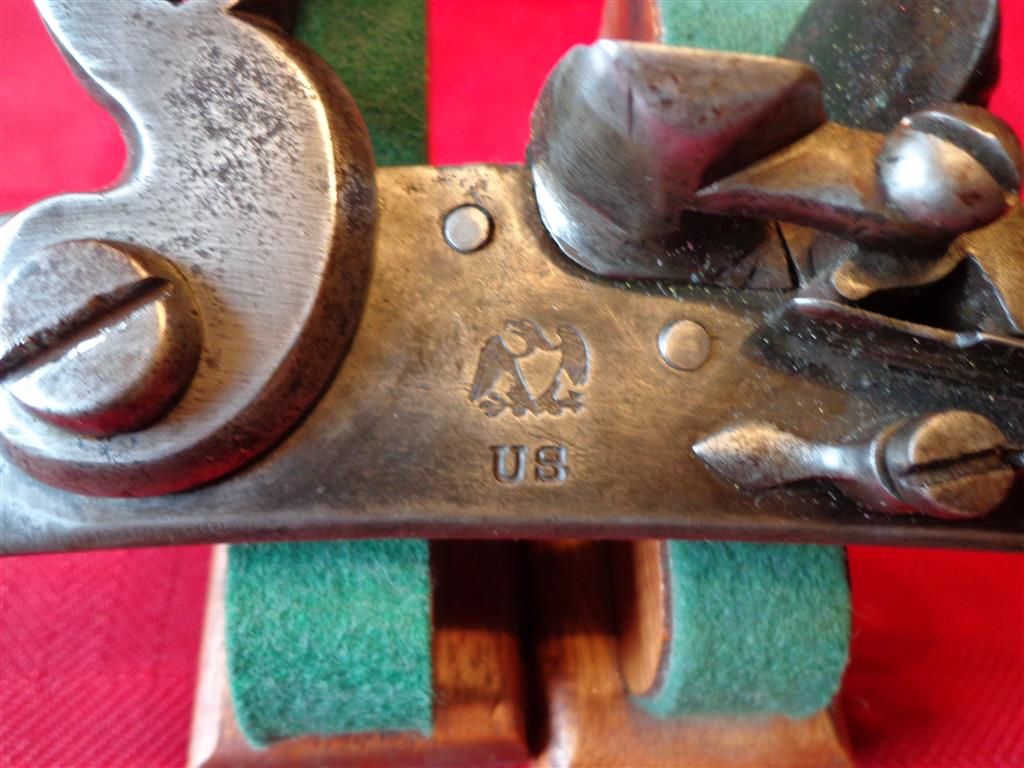
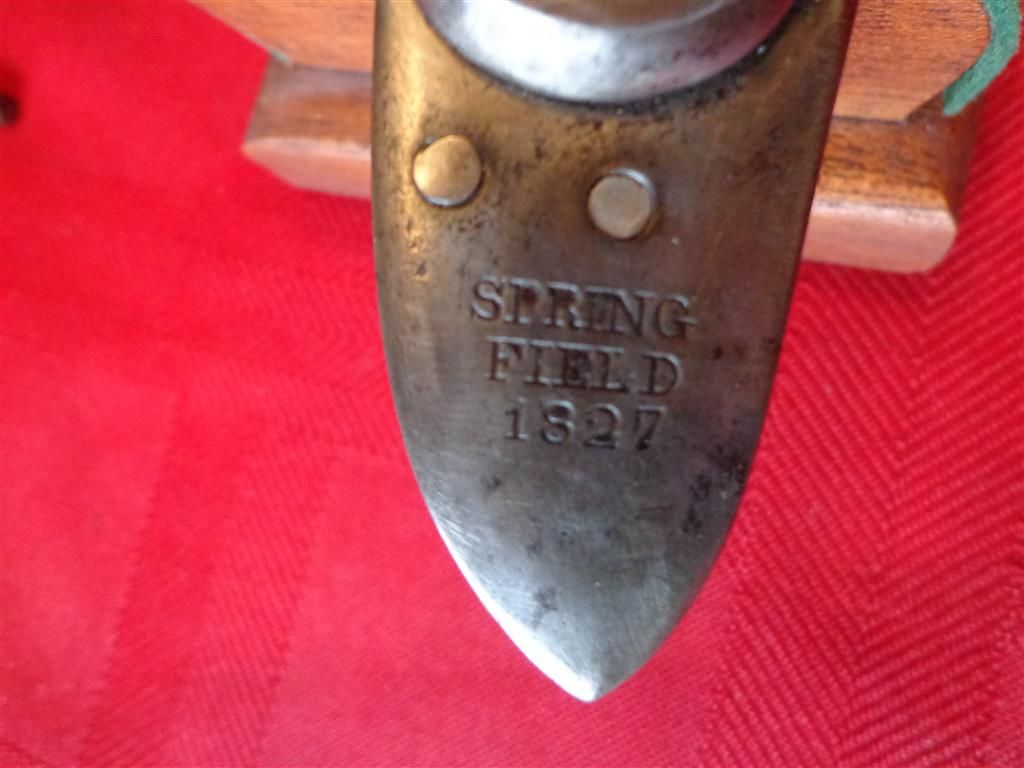
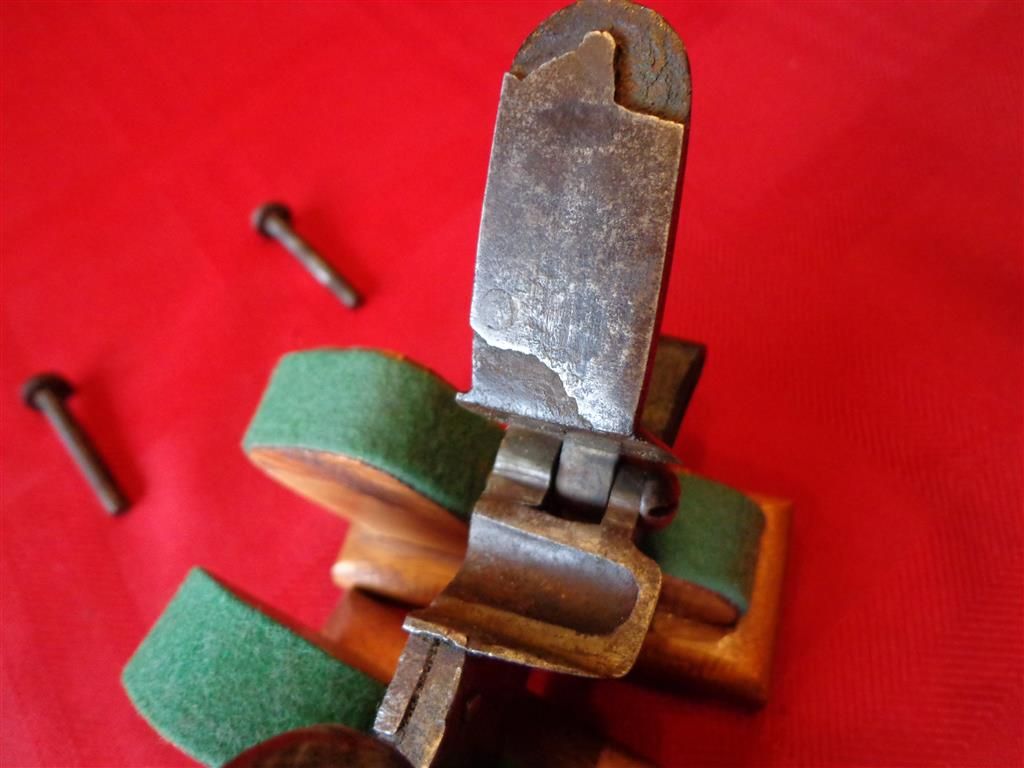
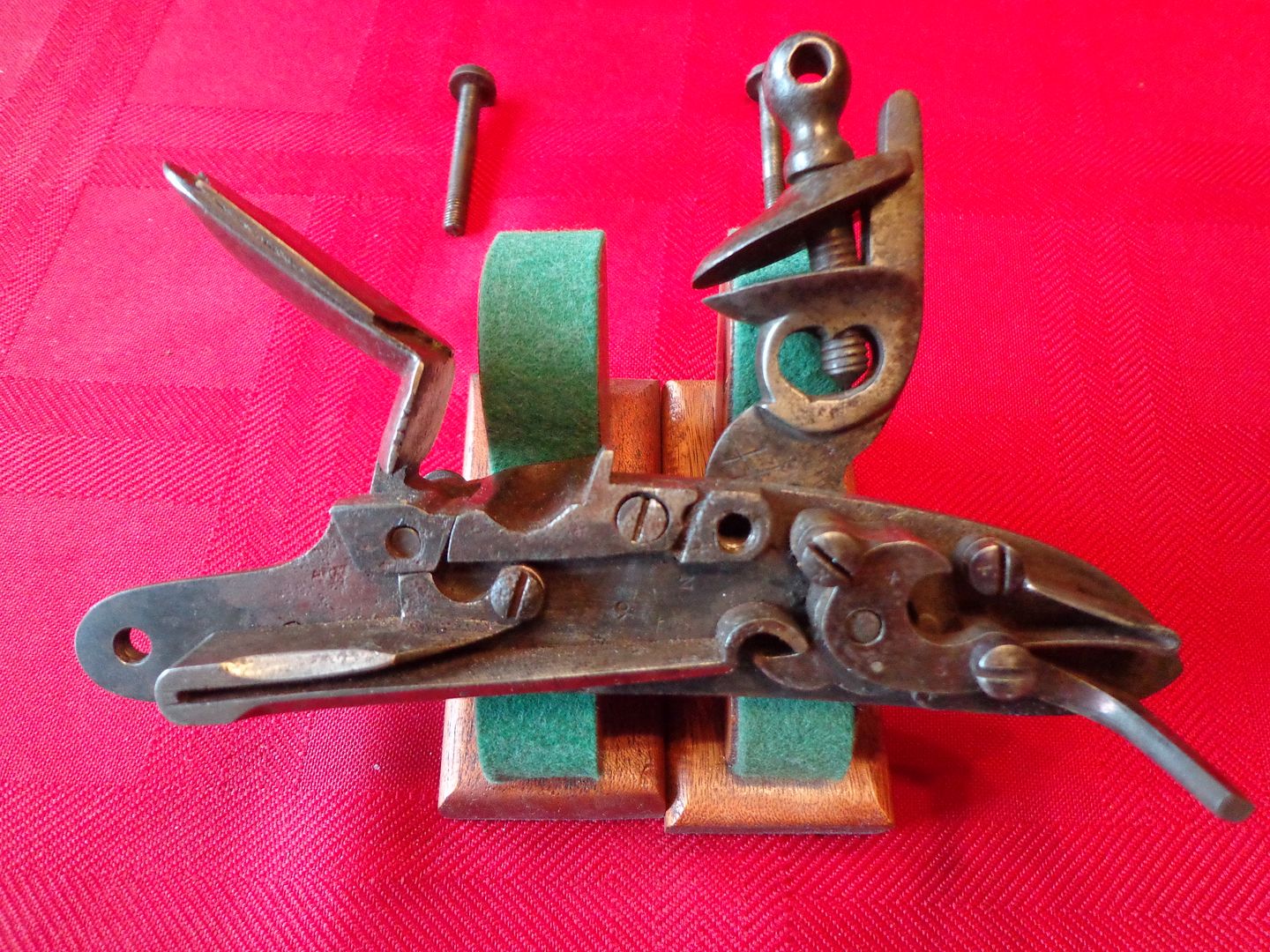
Here is another item I picked up while at the Antique Arms Show in Baltimore last month.
Seller said it had been re-converted back to flintlock. And I don't dought that. The vent hole shows no corrosion or wear like the rest of the gun.
While this is not in my area of expertise, I come to you guys with a couple questions/comments: The lock is dated 1827. The frizzen looks like the 1816 style, but with the old remenants of being half-soled. But if I'm correct, it looks like the re-conversion was done utilizing a 1795 style hammer. Is that correct ? Also, the caliber at the muzzle is about .74 I thought they were all standard U.S. .69 I did not mike it, but the simple bore guage comes out to that.
Anyway, I thought this might be a good candidate to make into a shooter. The lock's in good working order. Just needs a new frizzen. And the ramrod is missing. But that can also be replaced. The bore looks a bit rough. Hope it will burnish out ok. If not, it can have Hoyt install a liner. The stock is very solid. No cracks. The only thing thats a real mystery is the bore caliber. Any ideas ? Thanks.
Rick


























